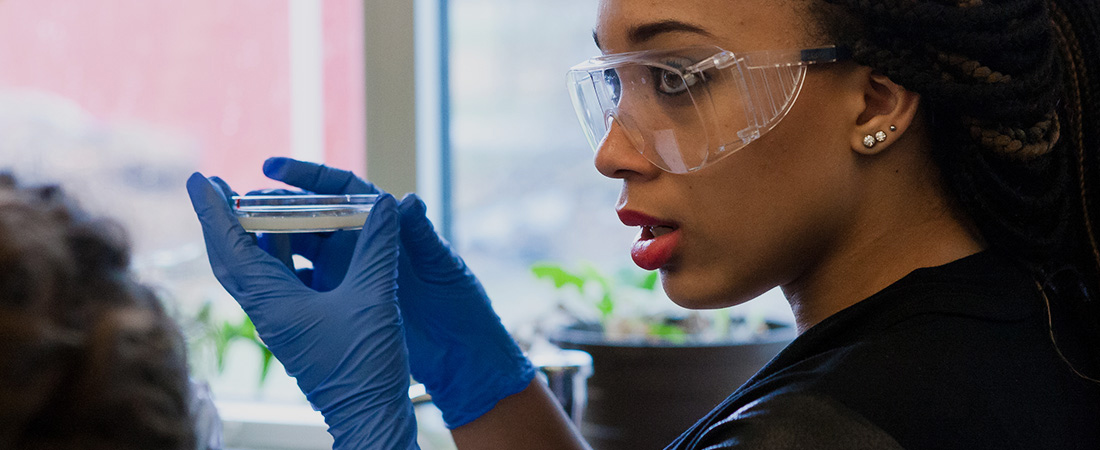Bringing the Lab into the Classroom

For three weeks this winter, Sue Turkovich’s science lab at the Academy of Notre Dame in Tyngsboro, Massachusetts, looked more like a biotech start-up than a high school classroom.
In the program, students used advanced biotechnology tools to insert plasmids into bacteria, turning them a very seasonal color—pink.
“This was a huge hit at an all-girls’ school, especially around Valentine’s Day,” says Turkovich.
Any biology class would love to have the micropipettes, centrifuges, and chemical reagents needed to replicate the experiments that Turkovich was able to do with her students. But few schools, public or private, are able to afford it. Until this year, these lessons were a pipe dream for Turkovich, too.
This changed last summer when she had the opportunity to participate in the Amgen Biotech Experience (ABE), a professional development program that provides both a cutting-edge molecular biology curriculum and the materials required to carry out the advanced experiments.
After an intensive two-day workshop at Harvard University, Turkovich returned to her high school classroom with ideas for new experiments and new tools. Like all teachers in the ABE program, Turkovich was given access to a $20,000 research-grade science kit for three weeks.
She says that students first marveled at the gear. Then they dove right into the experiments, just like scientists.
“It makes such a difference for students to realize, ‘I’m doing something in class that might actually happen in a laboratory,’” she says.
The roots of the ABE program reach back to 1989, when it began as a small partnership between Amgen and a biology teacher in Thousand Oaks, California. Renamed the Amgen Biotech Experience in 2013, ABE now reaches 50,000 students per year and is building the next generation of STEM consumers and researchers in the United States.
Connecting teachers to science
ABE operates on a teacher-training model. Eight program sites scattered across the country—including one at Harvard’s Life Sciences Outreach Program—serve as teacher training hubs where teachers can gather and conduct the experiments that form the core of the program’s molecular biology curriculum. (ABE also maintains program sites in Puerto Rico and England.) To encourage teacher participation, the program is free.
As the official Program Office for ABE, EDC is playing a role in ensuring that the program reaches as many teachers and students as possible.
“In selecting a Program Office, the Amgen Foundation wanted an organization that really understood what the program was about and could do long-term outreach,” says EDC’s Rebecca Lewis, who leads the collaboration.
EDC has already made its mark on the program. Last year, Lewis and a team of EDC science educators developed the classroom curriculum that forms the backbone of the course, pulling from a series of lab experiments created by Amgen scientists and educators. In 2014, Lewis hopes to enhance the program’s professional development model.
“Professional development varies considerably among the different sites,” she says. “We want to develop tools to help trainers take a more pedagogical approach, rather than just showing teachers how to carry out the scientific procedures.”
She also wants to facilitate relationships across the program sites, helping teachers stay connected through face-to-face conferences and Web forums even after they have left the intensive professional development workshops.
In some cases, this is already happening. Turkovich says that meeting other science educators was one of the highlights of the training sessions.
“It was one of the best professional development workshops I’ve had,” she says. “Every time we sat and had lunch together, we’d talk about the labs and how we were going to apply what we were learning in our classrooms.”
This positive feeling has filtered down to her students, too.
“This course gets very personal for them, especially when they examine their own DNA,” she says. “Some girls walk away from this class saying, ‘this is what I want to do with my life.’”